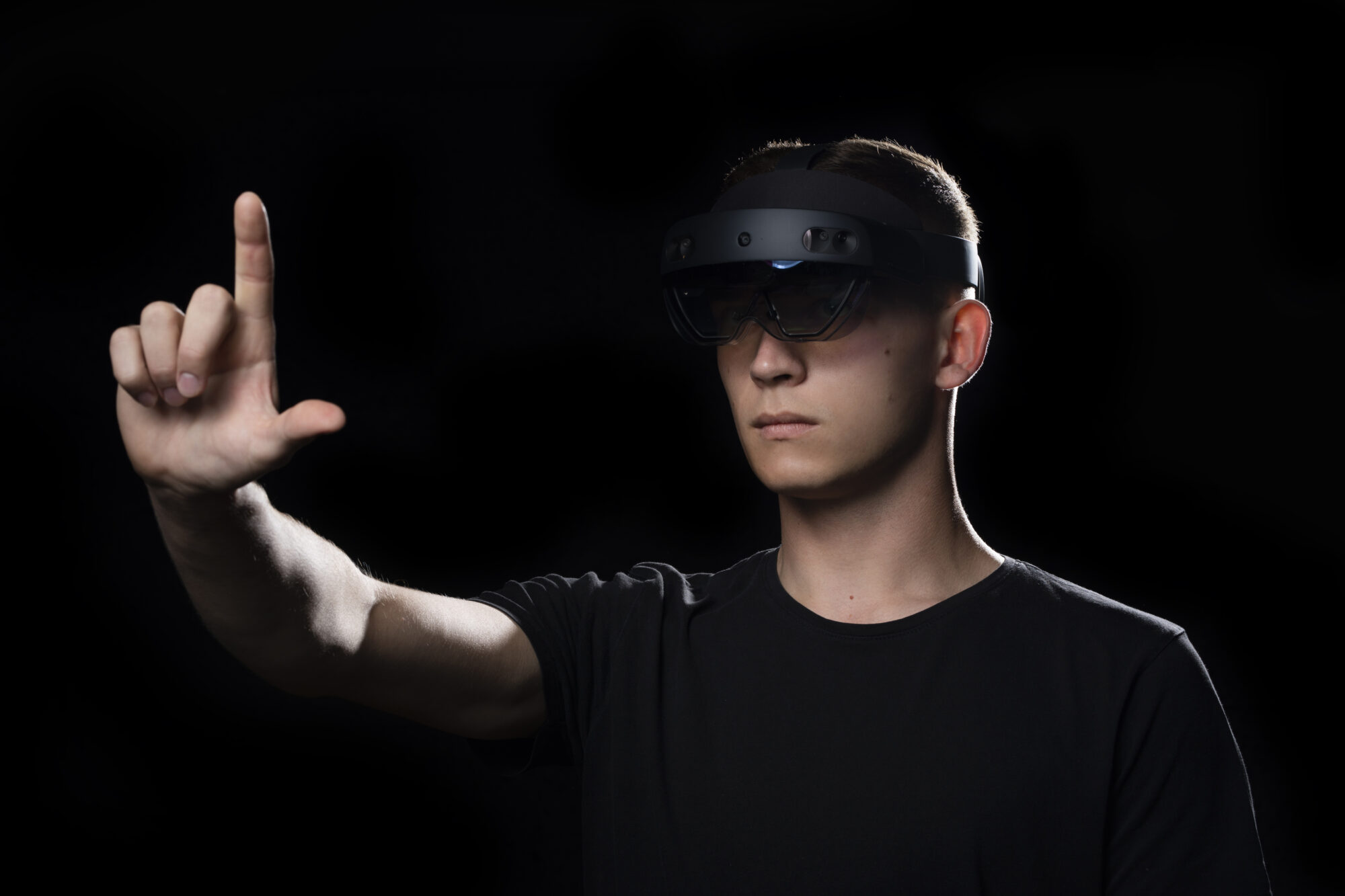Augmented Reality (AR) stands out as a beacon of innovation, reshaping how we interact with the digital and physical world. Initially confined to mobile devices and specific applications, AR has grown leaps and bounds, transitioning into wearable technology that offers an even more immersive experience. Enter AR glasses—a pioneering tool that’s set to revolutionize multiple sectors, from healthcare to entertainment.
These glasses aren’t just a fashionable accessory; they are a bridge between our reality and enhanced digital overlays. The potential of AR glasses goes beyond mere visual appeal; they promise to bring about a paradigm shift in information consumption, professional training, and everyday interactions. As we embark on this guide, we’ll uncover the nuances of AR glasses, their diverse applications, and the transformative potential they hold for various industries.
Understanding the basics: what are AR glasses?
AR glasses, in essence, are wearable computer glasses that add information to what the wearer sees. Unlike virtual reality headsets, which take you to a different world altogether, AR glasses superimpose a layer of digital content onto the real world. This digital layer can range from simple data displays, such as weather or notifications, to complex 3D models and animations. The result? A seamlessly integrated visual experience that enhances the user’s perception and understanding of their surroundings.
The difference between AR glasses and their VR counterparts lies in immersion. While VR submerges the user in a completely artificial environment, AR retains the real world as the backdrop, enhancing it with digital elements. This distinct functionality of AR glasses opens doors to applications that are both practical and entertaining, making them relevant to diverse sectors and audiences.
One might ask, “Aren’t smart glasses and AR glasses the same?” Not quite. While both fall under the wearable tech category, smart glasses are more akin to wearable computers, providing features like internet connectivity, app interfaces, and more. AR glasses, on the other hand, focus primarily on overlaying augmented reality visuals. Understanding this distinction is crucial as we delve deeper into the varied use cases and applications of these technologies.
AR glasses vs. smart glasses: differences
Navigating the wearable tech ecosystem can be daunting, especially with terms like ‘smart glasses’ and ‘AR glasses’ often used interchangeably. However, these two technologies, while related, serve distinct functions. Smart glasses, like the famous Google Glass, offer features such as capturing photos, viewing notifications, or making calls. They’re like having a mini-computer on your face.
AR glasses, conversely, are specialized tools with a primary function: to superimpose digital information onto the real world. Imagine walking through a historical site and seeing annotations about its significance or looking at a machine and getting real-time stats about its performance. That’s the power of AR glasses. While some AR glasses incorporate ‘smart’ features, the hallmark of true AR glasses is their ability to augment the wearer’s reality.
So, why is this distinction important? As businesses and consumers consider investing in wearable tech, understanding the capabilities and limitations of each technology can guide informed decisions. Whether it’s for professional training, gaming, or daily tasks, choosing the right tool can make all the difference in the experience and outcomes.
Adoption and use cases across industries
AR glasses are not a futuristic concept; they’re here, and industries are rapidly finding innovative ways to incorporate them. In the healthcare sector, for example, surgeons utilize AR glasses to overlay vital stats and 3D images during intricate surgeries, ensuring precision and reducing risks. On factory floors, workers can access assembly instructions or spot machinery malfunctions in real-time, driving operational efficiency and safety.
In the realm of education, teachers and students are experiencing a whole new dimension of learning. Imagine students exploring the solar system, with planets revolving around them, or delving deep into the human anatomy with 3D models — all within the classroom’s confines. Retail hasn’t remained untouched either. Shoppers can try on clothes, accessories, or even makeup virtually, revolutionizing the shopping experience and reducing returns and dissatisfaction.
Beyond these industries, AR glasses are making strides in entertainment, real estate, tourism, and more. Whether it’s for gamers immersing themselves in lifelike scenarios or tourists exploring landmarks with historical overlays, the applications are boundless. Every sector is on the brink of an AR-driven transformation, unlocking potentials that we’re only beginning to fathom.

presentation to try
Nsflow in action
Envisioning the future: a new era of innovation and efficiency
The rise of AR glasses announces an era where digital and physical realities are intertwined. The implications are profound. With immediate access to information, professionals across fields can make quicker, data-driven decisions. In our daily lives, mundane tasks can become more interactive and engaging, from cooking with recipe overlays to navigating a city with directional cues.
But it’s not just about the present; the future promises even more advancements. As AR glasses become more mainstream, we can expect them to be more compact, affordable, and integrated with other technologies like AI, further refining the user experience. We might witness scenarios where a mechanic, thousands of miles away, assists in a repair job using AR overlays or virtual collaboration in real-time, cutting across geographies and time zones.
Yet, with innovation comes responsibility. Ethical considerations, such as data privacy and user safety, will be at the forefront as industries adopt AR glasses. Balancing the transformative potential of AR with ethical practices will be paramount to truly harness its benefits.
Wrapping up: are AR glasses the next big thing?
To say that AR glasses are transformative would be an understatement. They’re set to redefine how we consume information, interact with our environment, and even connect with each other. While we’re still in the early adoption phase, the momentum is undeniable. The confluence of technology, industry interest, and consumer curiosity is propelling AR glasses into the spotlight.
However, like any technology, AR glasses will undergo iterations and improvements. What’s essential is to stay informed, open-minded, and ready to adapt. As businesses, professionals, or even everyday users, embracing AR glasses now might just offer the competitive edge or enhanced experience we seek in a world where innovation is constant.
The beauty of AR glasses lies in their versatility. In emergency response scenarios, for instance, firefighters can use AR glasses to see through smoke or identify structural weaknesses in a burning building. In aviation, pilots and ground staff can receive real-time data on weather conditions, flight paths, and potential hazards, ensuring safer skies.
Moreover, social interactions are also evolving with AR glasses. Imagine attending a global conference from your living room, networking in a virtual space, exchanging digital business cards, or even conducting product demonstrations. Similarly, in the tourism sector, visitors can receive real-time translations, historical data, or cultural anecdotes as they explore new places, making travels richer and more informative.
One can’t help but wonder: as AR glasses become more integrated into our routines, how will they shape our perceptions of reality and virtuality? The lines are blurring, and in this convergence lies a world of limitless possibilities.


























